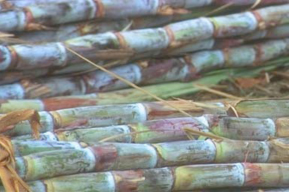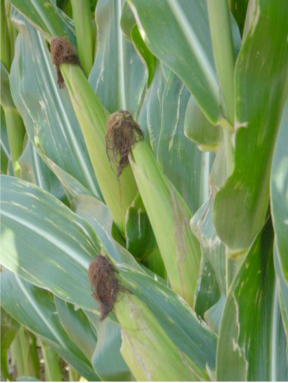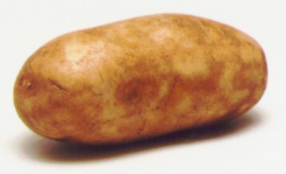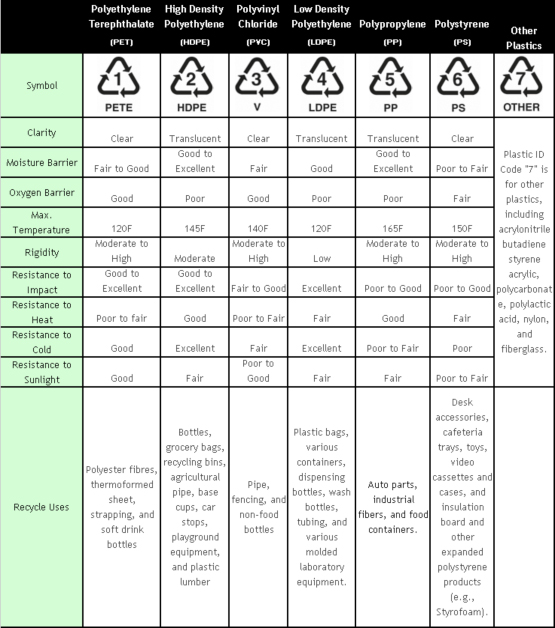Green Materials Terms & Definitions
PFM is committed to educating you about the environmentally friendly options for your packaging and paper needs. There are a wide range of items that are biodegradable, compostable, and recyclable.
Recognizing the social responsibility we have to care for our world, As our patrons are increasingly committed to protecting their environment, their interest for biodegradable materials will increase. Operators who choose to use environmentally friendly products will distinguish themselves. Serve your next customer with products that will contribute to reuse and renewal of the earth's resources, and reduce dependency on foreign oil. We hope our Green Guide provides you with actionable information and ideas to help enhance your business and add value for your patrons!
ALTERNATIVE PACKAGING OPTIONS
There are several certifications and ecolabeling organizations that help us to define what it really means to be "certified green." This chart is an overview of what each organization certifies, along with the page number where you can find more information about that particular certification.
BAGASSE (SUGAR CANE)

Bagasse is a readily renewable resource - it's sugar cane stalk! The dry, fibrous residue, remaining after the extraction of juice from the crushed stalks of sugar cane, is used as a source of cellulose for paper. Composting is required for biodegradation - products will biodegrade within 30 days in a commercial composting facility. When using a 100% natural fiber product like Bagasse, it will "relax" somewhat when it has hot liquids in it and stiffen back up as it cools. Benefits: 100% biodegradable & compostable - saves trees, renewable and reclaimed, grease resistant, microwave and freezer safe. Feels like paper, but is less expensive. Heat safe to 212º F. Wood fiber free.
BIOPLASTICS

Bioplastics are derived from renewable raw materials like: starch (e.g. corn, potato, tapioca etc), cellulose, soy protein, lactic acid etc. They are not hazardous in production, and decompose back into carbon dioxide, water, biomass etc. when discarded.
POLYACTIC ACID (PLA)
Polylactic acid (PLA) is a biopolymer derived from lactic acid that is produced by the fermentation of corn sugars. Less energy is needed to manufacture the PLA than the petroleum based lining it replaces. Sugars/starches are extracted from the corn and converted into a polymer. This polymer is made into a resin that can be converted or thermoformed into usable products. It is made from 100% USA grown corn. PLA is completely compostable under commercial composting conditions in 45-60 days.
Benefits: Clear, plastic like texture – looks and feels like plastic. Saves 50% of resources vs. conventional plastics. Compostable. Made from renewable resources. Designed for cold food or beverages only. Heat stable to 110º F. Freezer safe. Sterilized and sanitized, conforms to U.S. Food & Drug Administration guidelines.
Please Note: Bioplastics have a melting point of approximately115-131º F.
MOLDED FIBER
Molded Fiber is a packaging material, typically made from 100% recycled corrugated fiberboard and newspaper. It is used for protective packaging or for food service trays and beverage carriers. Molded pulp is also commonly referred to as molded fiber. Other typical uses are end caps, trays and clamshell containers. Heavy duty, biodegradable, and compostable. Grease and water resistant. Microwaveable.
PLA LINED PAPERBOARD
PLA replaces petroleum based liners. Creates leak proof lining for hot cup usage. Offers a more renewable alternative to conventional products. Modified PLA is able to withstand heat.
PLANT STARTCH MATERIAL (PSM)
Created from 80% non-GMO corn and 20% other biodgradeable fibers.
Benefits: Functional for hot and cold foods.
POTATO

GMO Free (Genetically Modified Organics). Biodegradable.
Benefits: Suitable for hot and cold foods. Heat stable to 375°F. Freezer safe and micro-warmable for reheating use only.
GREEN GLOSSARY
Biodegradable
A material will decompose into naturally occurring, harmless components with exposure to air, sunlight, and/or moisture. No timelines are currently established for breakdown.
Bioplastics
Bioplastics are made from natural materials. They are carbon neutral due to the reduced amounts of fossil fuels used to make it, and the consequent lowered amount of CO2 emissions.
Biodegradable Plastic
Plastic which will degrade from the action of naturally occurring microorganisms, such as bacteria, fungi, etc. over a period of time. Note that there is no requirement for leaving "no toxic residue", and as well as no requirement for the time it needs to biodegrade.
Compostable
Product can be placed into a composition of decaying biodegradable materials, and eventually turns into a nutrient-rich material. Certification standards require specific timelines in order for products to be called compostable.
Compostable Plastic
Plastic which is "capable of undergoing biological decomposition in a compost site as part of an available program, such that the plastic is not visually distinguishable and breaks down to carbon dioxide, water, inorganic compounds, and biomass, at a rate consistent with known compostable materials (e.g. cellulose) and leaves no toxic residue".
Degradable Plastic
Plastic which will undergo a significant change in its chemical structure under specific environmental conditions resulting in a loss of some of its properties. Please note, there is no requirement that the plastic has to degrade from the action of "naturally occurring microorganism" or any of the other criteria required for compostable plastics.
Eco-toxicity
The biodegradation does not produce any toxic material, and the compost can support plant growth.
Environmental Sustainability
Satisfying the needs of the present without diminishing the ability of future generations to meet their needs.
Fair trade
Decent price paid to growers or farmers.
Food Miles
Distance product travels from where it is sourced or grown to the consumer.
Low Carbon Footprint
Product does not produce a huge amount of CO2, taking all factors into account – its production, its use, how it gets here, and embodied energy.
Low Carbon Emissions
The production, use and disposal of product emits low levels of carbon.
Recyclable
Materials are broken down (melted or pulped) into a basic substance from which a new product can be formed. It is important to be clear about the meaning between the four terms.
Recyclable
All paper is recyclable. The "recycling symbol" has very little meaning, as it can be used on items which can be "recycled", but may have zero recycled content.
Recycled
Paper which is designated as "recycled" can be a mixture of virgin wood fiber, pre-consumer waste or post-consumer waste. There are two types of recycled paper— pre-consumer recycled paper and post consumer waste recycled paper.
Pre-consumer content
Paper made out of paper scraps and trimmings left over from the paper manufacturing process. These paper scraps and trimmings are easiest to recycle, as they do not have to be collected, separated, de-inked, etc.
Post consumer waste (PCW)
Made out of paper which has been used by the end consumer and then is collected for recycling from various recycling programs. This is the best paper to buy, as it uses and creates demand for paper which would normally end up in the landfill, and no trees are cut down for making the paper.
The actual percentage of the recycled and post-consumer recycled content is important to note when buying paper. It is optimal to find paper products, which are 100% PCW recycled, and are either unbleached or bleached without using chlorine or chlorine derivatives.
Renewable Resources
Resources that are created or produced at least as fast as they are consumed, so that nothing is depleted.
Re-usable
At the end of its useful life product can be refilled or used for another purpose.
Sustainable
The materials used in this product come from sustainable sources - for every one used, one is planted, or grows naturally. Materials can be used with the knowledge that they will be replenished.
Zero Waste
Designing and managing products and processes to reduce the volume and toxicity of waste and materials, conserve and recover all resources, and not burn or bury them. Implementing Zero Waste will eliminate all discharges to land, water, or air that may be a threat to planetary, human, animal or plant health.
PLASTIC PACKAGING RECYCLING CODES
